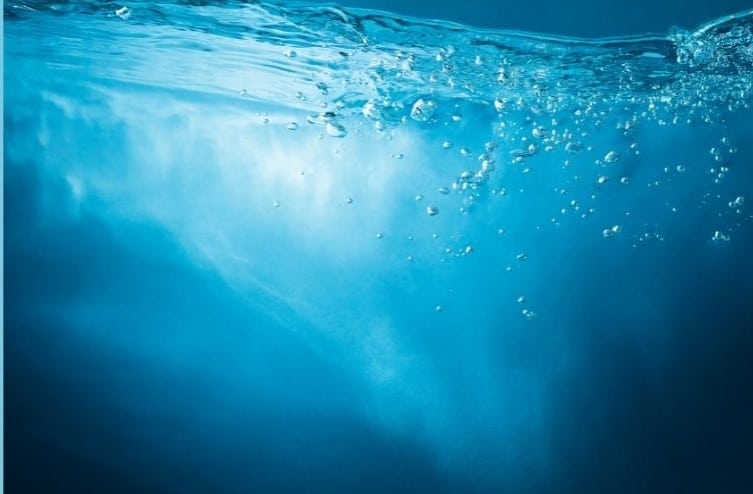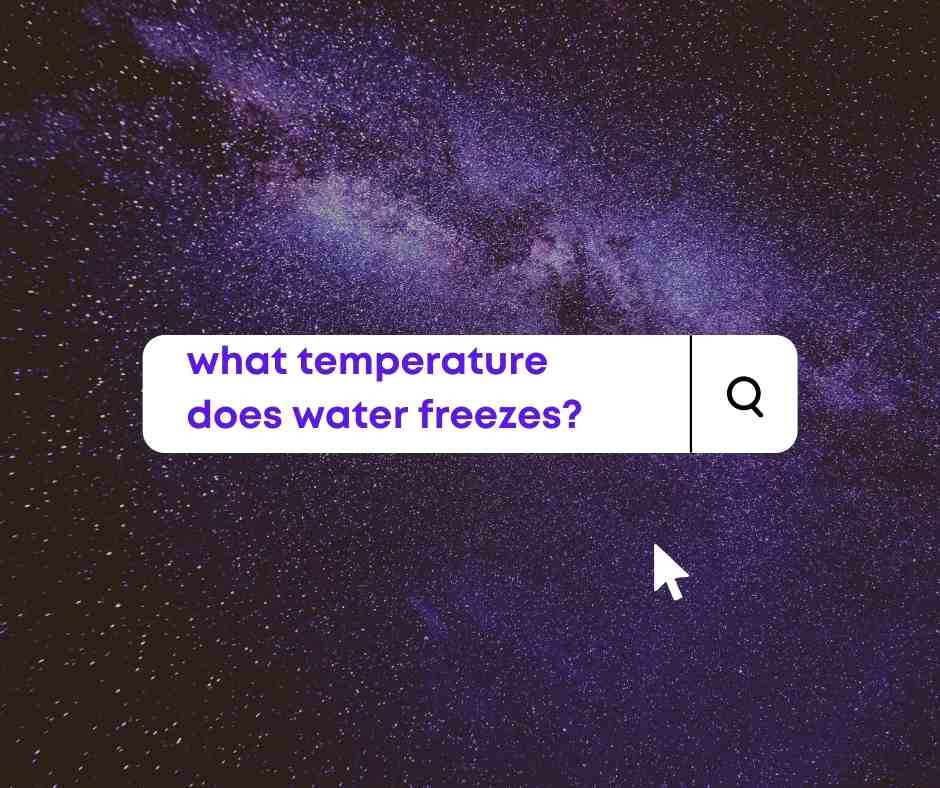The density of water in g/ml is 0.9998395 at 4.0°C (39.2°F). This is equal to a rounded value of 1 gram per milliliter (g/ml) or 1 gram per cubic centimeter (g/cm3). The exact density of water is affected by both air pressure and temperature. However, because the variations in density are so minor, we can use 1 g/cm3 for water density unless we need to use very precise calculations. The density of pure water at 39.2°F or 4.0°C with different units is given in the table below.

| The density of water g/mL | 1 g/mL |
| The density of water g/cm3 | 1 g/cm3 |
| The density of water kg/m3 | 1000 kg/m3 |
| The density of water lb/ft3 | 62.4 lbs/ft3 |
| Unit weight of water | app 1 g/cm3 at 25 degrees Celsius |
| viscosity of water | 0.01 poise or 0.001 Pa.s (Pascal seconds) at 20 degrees Celsius |
| the specific gravity of water | 1 at 4 degrees Celsius (no units) |
| a cubic foot of water weight | 62.48 pounds at room temperature. |
| Density of water lb/U.S gallon | 8.345 lb/U.S gal |
Table of Contents
What is Density?
Density is the quantity of matter per unit volume. It is the ratio of mass to volume of a substance. If we take equal volumes of wood and iron. We will find that iron is heavier than wood. This is due to the large quantity of matter in iron than in wood.
Density (ρ) formula = mass (m) of substance ÷ volume (v) of substance
The density of water in g/ml
The density of water ( ρwater )is around 1g/ml, but this value changes with temperature or impurities present in water. Common units of ρwater are grams per milliliter (1 g/ml), grams per cubic centimeter ( g/cm3), and pounds per cubic foot (lb/ft3). The density of fresh water on Earth at 4°C is normally taken as 1000 kg/m3.
The specific weight of water
The specific weight of water refers to the weight per unit volume of a material. Its symbol is γ.
The specific weight of water on Earth at 4°C = 9.807 kN/m³ = 62.43 lbf/ft³.
Calculating the specific weight of water
The density of water in g/ml = 1 g/ml
ρwater at 4°C (1 atm) is 1000 kg/m3
gravity (g) = 9.807 m/s2.
Weight (W) = mass (m) x gravity (g)
W = m x g
Specific weight (γ) = (ρ x volume x g)/volume
γwater = ρwater x g = 1000 kg/m3 x 9.807 m/sec2 = 9.807 kN/m3 ( 1 N = kg⋅m/s2)
Density Of Water in g/ml-Example Problem

The mass (m) of 8 liters of water is 8 kg. Its ρwater will be:
Volume = 8 liter = 8 x 10-3 m3
m=8 kg.
ρwater =mass/volume.
The density of water (g/ml) = 8kg/(8 x10-3 m3 )
=1 g/ml
Why does ice float on water?
Less dense matter floats on the dense liquid.
Since the ρwater of ice is less than the ρwater of water, therefore ice floats on water.
Generally, when a solid mass of a substance is put in a liquid of the same substance, it sinks. The atoms or molecules of solids are more closers together than the atoms or molecules of the liquid. Therefore, the ρsolid > ρliquid > ρgas
There are some exceptions to this rule. Some materials like Silicon, Germanium, Bismuth, and water are less dense in solid form than in liquid form.
However, this exceptional behavior is never seen in nature for any of these materials except water because melting points are very high except for water.
To understand the concept of ice floating on water, we need to understand the structure of water.
Every water molecule is made up of two hydrogen atoms bonded to one oxygen atom. Due to this molecular structure, water behaves abnormally when cooled.
On cooling, It continues to contract and reduce in volume until 4°C.
Beyond this temperature, its volume increases and becomes more than the initial volume.
Hence its ρwater decreases and becomes more than the initial volume.
This makes ice lighter than water, enabling it to float.
Ice is 8.3% less dense than water.
| Density value | Reference |
| The ρice is in the range 0.9167 -0.9168 g/cm3 at 0 °C and a standard atmospheric pressure of 101,325 Pa | “Definition of ICE”. www.merriam-webster.com. Retrieved 19 June 2018. |
| The ρwater is in the range of 0.9998 -0.999863 g/cm3 at the same temperature and pressure | The density of water explanation by USGS |
The specific gravity of water
Specific gravity (G) of a substance is its density divided by the ρwater.
The specific gravity of water is one. It is the ratio of a material’s ρ with that of water at 4 °C (where it is most dense and is taken to have the value 999.974 kg m-3).
There are no units for specific gravity. It’s a ratio.
For something that floats, the specific gravity reveals what fraction of that object will be below the water while it’s floating.
For instance, consider a cube of wood floating on water with a specific gravity value of 0.2.
The specific gravity value of 0.2 means that 20% of the wooden cube will be submerged in water.
What is Freshwater?
Freshwater (or freshwater) is any naturally occurring water safe to drink.
It contains a concentration of dissolved salts less than 500 parts per million (ppm) of dissolved salts. Only three percent of the earth’s water is freshwater. The freshwater habitats are less than 1% of the world’s total surface area.
Recommended essential freshwater requirement for human needs (per person) is 5 liters/day.
Properties of Freshwater
- Naturally occurring water is safe to drink.
- Contains low concentrations of dissolved salts and other total dissolved solids.
- Naturally occurring seawater and brackish water are not freshwater.
- Mineral-rich waters such as chalybeate springs are included in the category of freshwater.
- Waters from ice sheets, ice caps, glaciers, icebergs, bogs, ponds, lakes, rivers, and streams are also included in the category of freshwater.
- It can only be restocked through the process of the water cycle, in which water from seas, lakes, forests, land, rivers, and reservoirs evaporates, forms clouds, and returns as precipitation.
Types of Freshwater
Freshwater can be broadly separated into two types, namely:
- Stagnant water (water that is still. some of its sources are lakes, marshes, and swamps)
- Flowing water (water that is constantly moving. Some of its sources are such as rivers and streams)
The density of water in g/ml (effect of temperature)
The temperature of the water can affect the ρwater.
Even moderate fluctuations in temperature do have an effect on the weight of water.
When we heat up water, we increase the energy of water molecules.
As a result, water molecules get excited and become more spaced out.
Therefore, the amount of space each molecule needs is greater.
This results in a decrease in the ρwater
Therefore, the density of the cold water is greater than it would be in the hot water.
How much does a gallon of water weigh at its highest density?
Water has a maximum density of 39.2ºF or 4ºC.
At this temperature, a gallon of water weighs around 8.345 lbs.
If we turn the heating way up to 200ºF though, a gallon of water will weigh around 8.04 lbs.
At room temperature (70°F or 21°C), a US gallon of water weighs 8.33 lbs (3.78kg).
Factors Affecting Density of Water
- Temperature of water
- The purity of water
Summary
- The accurate value of the density of water in g/ml is 0.9998395 g/ml at 4.0°C.
- Water has a maximum density of 39.2ºF or 4ºC.
- The density of the cold water is greater than it would be in the hot water.
- Freshwater contains a concentration of dissolved salts less than 500 parts per million (ppm) of dissolved salts
Related Links
How much does a gallon of water weigh?
How Many Bottles of Water Equal a Gallon
Mass vs Weight| Easy Explanation
Hydrogen Bond| Definition and Easy Explanation
Atmospheric Pressure| Pascal And Newton
Frequently Asked Questions (FAQs)
1. Why does oil float on water?
Oil floats on water because its density is lower than that of water. Density in liquids is defined as the amount of mass that may be filled in a cubic meter of volume. Water has a density of roughly 1000 kg/cubic meter, while oil has a density ranging from 800 to 960 kg/cubic meter.
2. What is a water molecule and how many hydrogen atoms are in a molecule of water?
Water is a substance that exists in gaseous, liquid, and solid phases and is made up of the chemical elements hydrogen and oxygen. It is one of the most abundant and necessary chemicals. At room temperature, it is a tasteless and odorless liquid with the critical capacity to dissolve many other compounds. Water’s capacity as a solvent is critical to living creatures.
A water molecule consists of two hydrogen atoms attached to the sides of a single oxygen atom.
Seawater is saline water with more concentration of dissolved salts. Its ρ is 1.0240 g/cm3 at 20°C and 1.0273 g/cm3 at 0°C at a constant salinity.
On cooling, water continues to contract and reduce in volume until 4°C.
Beyond this temperature, its volume increases and becomes more than the initial volume.
Hence its ρwater decreases and becomes more than the initial volume.
This makes ice lighter than water, enabling it to float.
One US liquid gallon equals 16 cups and one US dry gallon equals 18.61 cups. One cup is one-half US pint (236.6 ml). For details, check the article How Many Cups in a Gallon? Cups to Pints, Quarts, and More
More Links
- BCl3 Lewis Structure in four simple steps - November 1, 2023
- PH3 Lewis Structure in four simple steps - October 8, 2023
- PF3 Lewis structure in four simple steps - September 24, 2023



